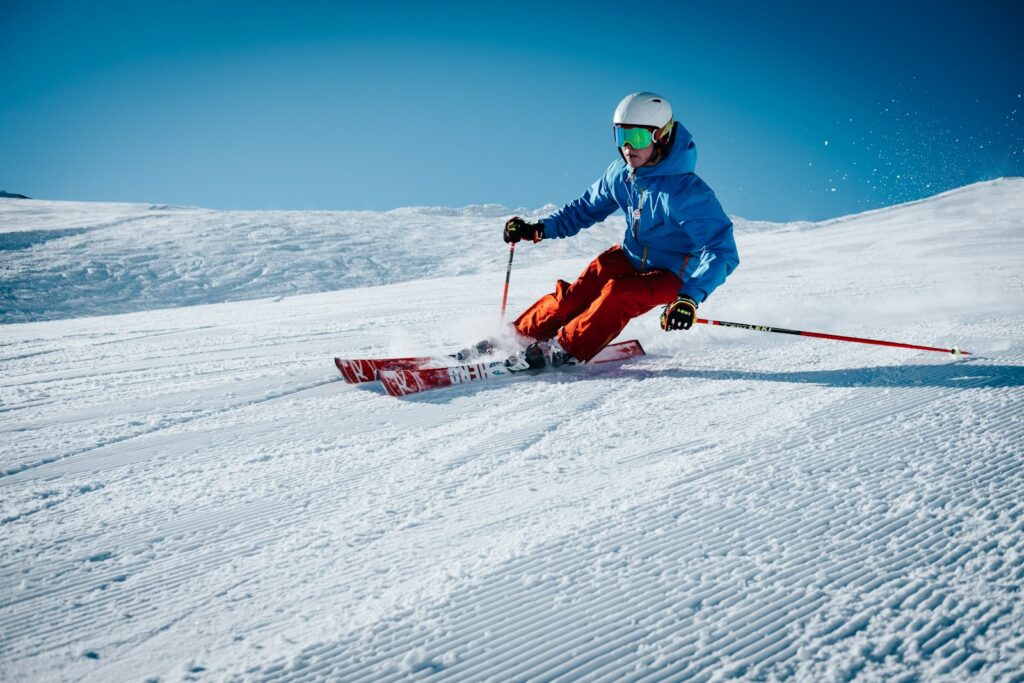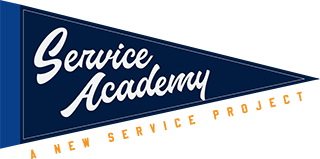
The Dutch boy, taking off his skis, sitting in the snow, would do nothing but shake his head. He sat silent as the other instructor and I looked at each other, trying to figure out what to do next. The kid was physically present but completely checked out. Little did I know that this reluctant child would teach me a vital lesson about the power of genuine engagement or that this stubborn, withdrawn five-year-old would be a perfect example of the importance of showing up in life.
It’s commonly said that “showing up is half the battle.”
I used to think showing up meant just being physically present. That as long as I was in the room, that counted. No matter how much my attention drifted.
But after ten weeks of ski instructor training, I’ve realized something profound: talent, skill, and experience are secondary to simply wanting to be there, fully engaged. The people who truly grow, who improve, who find joy in their experiences aren’t necessarily the most naturally gifted—they’re the ones who show up committed.
But just knowing that isn’t enough. Because the truth is, I didn’t always know how to show up—even when I wanted to.
Now, I’m starting to understand the deeper mechanics of engagement—how it works and why it matters so much.
The Kid Who Didn’t Want to Be There
The lead instructor and I quickly realized the little boy only spoke Dutch. That was a challenge—because neither of us did. Since we had three kids between the two of us, we had room to be patient with him, taking a gentle approach instead of forcing participation. We could use demonstrations to show different exercises, but then he would gesticulate in frustration when he sat down, shaking his head.
For two days, we tried everything. Encouragement through high-fives and cheers. Giving him leadership roles like being the ‘line leader.’ Pairing him with outgoing students, even a little girl who was his cousin who was excelling at the exercises. But for those first two days, nothing seemed to break through his resistance. He stayed closed off, his eyes down, his legs weak.
Then, on day three, I had an idea that changed everything!
While drinking hot chocolate, I used Google Translate to communicate with him in Dutch. At first, he was skeptical, watching as I typed simple words into my phone and Dutch words played back.. I could see curiosity spark as he looked up—more about the phone than the words themselves. His mouth stayed shut, but something had shifted. His posture, his energy—just slightly, but enough to notice.
Throughout that day, he began to sneak small smiles at my exaggerated demonstrations of silly exercises, thinking I didn’t see through his goggles and jacket collar.
By day four, everything had changed. He arrived at the meeting point with his skis already on, waving enthusiastically. He spoke to us in rapid Dutch, gesturing animatedly though we still couldn’t understand his words. His body language had transformed completely—shoulders back, head up, eager to get started.
He had come out of his shell; he was engaged—not just with me, but with the entire group.
I think the moment he felt an outreach, a connection, something unlocked. Connection is a source of confidence and a powerful reason to care. This confidence started to flow through his skiing as well—his turns got sharper, his legs strong, his smile grew as he achieved harder tasks. The other students could feel his energy, even though they couldn’t understand his words. Now, he wasn’t just in the class—he was a key part of it. He was participating at a high level, working hard, and getting better.
Watching this transformation unfold in just a few days made me reflect on my own patterns. How many opportunities had I missed because I was physically present but mentally checked out for any number of reasons? I recognized myself in his initial resistance, present but disengaged—the same way I’d approach situations already convinced they weren’t worth my full attention.
The First Lesson: Finding My Own Reasons to Engage
This experience taught me my first crucial lesson about engagement: We must find reasons to care, personal reasons to connect with experiences, especially when the activity does not immediately appeal to us.
I used to arrive unengaged—walking into a class, a lecture, a conversation, already convinced it wasn’t interesting or worth my attention.
I rarely thought about why. It was an unconscious prejudgement that relieved me of my responsibility to focus and engage.
I thought motivation was something that just fell into your lap—that if a lesson or skill was important enough, I’d naturally feel invested in it.
But that’s not how it works.
Engagement isn’t just about waiting for something to be interesting. What I find most interesting, the things I care about most, grew out of engagement first, not the other way around.
What I find interesting often isn’t about the subject itself—it’s about the energy in the room, the people in front of me, the circumstances, and my own mindset.
The real issue was that I never practiced overtly how to activate, harness, or channel my focus and attention, and engage, first, to make the class, lecture, or conversation matter.
That Dutch student? He wasn’t excited about ski school because he felt disconnected despite our efforts to include him.
But the moment he realized ski school wasn’t just about skiing—that it was a path to more. Once he found a reason to care—belonging, connection, and confidence—he was all in.
The Real Takeaway: Showing Up Is an Active Choice
This experience completely reframed what success looks like for me. While I once believed it belonged to those with natural talent or intelligence, I now see engagement as the true differentiator—the ability to engage on demand, actively care, to commit fully, and to discover meaning in whatever stands before me.
In my experience, once you find a way to connect what you’re learning to something you care about, even if it first means artificially harnessing and directing your attention, real growth happens. That Dutch student didn’t suddenly become a better skier overnight. But once he cared—once he showed up fully—his skiing took off. And once that happened, everything else followed—confidence, connection, and real improvement cultivating fertile soil for his passion for skiing to take root.
Final Thought: Showing Up for Yourself and for Others
Now I know that showing up fully is the real skill. You don’t have to show up with the perfect reason—you just have to start. Meaning and interest come after engagement, not before. If you have a natural reason to be engaged—great. If you don’t, find one.
Start by creating your own reason to engage, even if it feels artificial at first. Here curiosity is your friend. Maybe you’re trying to impress someone, prove something to yourself, or simply want to belong. When you’re focused, the specific reason why you show up matters less than the act of committing—because that initial commitment, however manufactured, keeps you open to discovering the genuine connections and motivations that will naturally emerge and sustain you.
Because once you engage, you open the door to joy and growth. And now I understand something else.
Finding your own reasons to care—and helping others do the same—is what great teachers and mentors do. That’s what separates those who truly improve from those who stay exactly where they are. That’s what makes a great learner, a great teacher, and a great teammate.
Just like that little Dutch boy who transformed from reluctant participant to enthusiastic skier, we all have the capacity to find meaning through engagement—we just need to take that first step.
— Thomas Growney
About Our Gap Year Journey
We’re Ryan and Thomas Growney, twin brothers and co-founders of Service Academy.
After graduating from St. George’s School in Rhode Island, we’ve embarked on a gap year to explore how different cultures approach problem understanding, community engagement, service, and social innovation.
Our journey will take us to various countries, including South Africa, where we’ll participate in the Tilting Futures program, and the Himalayas, where we’ll be joining the NOLS for a high-altitude mountaineering challenge. Throughout this year, we aim to challenge our assumptions, broaden our perspectives, and gather insights that will help us enhance our approach to social impact back home.
Ryan is particularly interested in scaling service initiatives to develop young leaders, while Thomas focuses on the personal connections and community belonging that service creates. By sharing our experiences, we hope to contribute to a broader dialogue about service, mentorship, community engagement, and cross-cultural learning.
We invite you to follow along on our journey, engage with our reflections, and share your own insights about service in diverse contexts.
Together, we can work towards creating more meaningful and impactful youth service ecosystems that benefit both young people and their communities.
